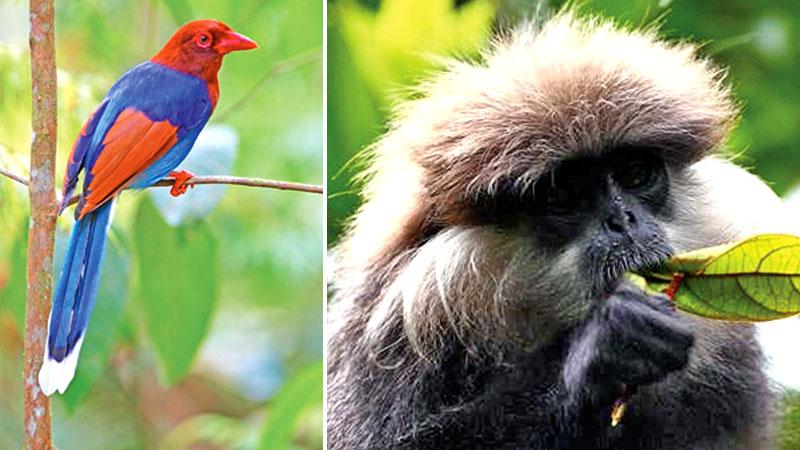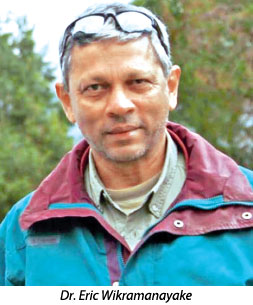
The planet is dying. Humans are killing the planet we live in. In the last four decades the world’s animal population has plummeted by 60% on an average, says the latest Living Planet Report released last Monday by the World Wildlife Fund (WWF). “Exploding human consumption,” has been the main cause of this decline.
 The Living Planet Index (LPI) focuses on four aspects of animal populations – abundance, distribution, composition and extinction risk. Data for the current report is gathered from peer-reviewed studies and focuses on 16,704 population groups belonging to 4,005 vertebrate species throughout the globe. “Earth is losing biodiversity at a rate seen only during mass extinctions,” the report reiterates stating that indicators measuring different changes in biodiversity show “dramatic, continued loss.” The decline is “specially pronounced in the tropics,” according to the report with South and Central America suffering a “most dramatic decline,” of 89%, and freshwater species 83 % compared to 1970 rates.
The Living Planet Index (LPI) focuses on four aspects of animal populations – abundance, distribution, composition and extinction risk. Data for the current report is gathered from peer-reviewed studies and focuses on 16,704 population groups belonging to 4,005 vertebrate species throughout the globe. “Earth is losing biodiversity at a rate seen only during mass extinctions,” the report reiterates stating that indicators measuring different changes in biodiversity show “dramatic, continued loss.” The decline is “specially pronounced in the tropics,” according to the report with South and Central America suffering a “most dramatic decline,” of 89%, and freshwater species 83 % compared to 1970 rates.
However, all is not lost. The decisions by individuals as well as the governing authorities today could help reverse the situation, say experts. The conservation group called for a “new global deal for nature and people,” similar to that of the Paris Agreement strengthening global commitment to combat climate change, to arrest ecosystem degradation. “The choice is ours,” wrote Marco Lambertini, WWF Director General in the report, “Today, we still have a choice. We can be the founders of a global movement that changed our relationship with the planet that saw us secure a future for all life on Earth, including our own. Or we can be the generation that had its chance and failed to act; that let Earth slip away.”
The report’s main concern is the functioning of ecosystems and the provision of ecosystem services. Biodiversity is the “infrastructure that supports all life on earth,” states the report. “All economic activity ultimately depends on services provided by nature.” It focuses on biodiversity’s impact on human wellbeing and livelihood, a global overview of how biodiversity relates to economic development and governance.
Though at present, 25 % of land on earth is “free of the impacts of human activities,” by 2050 it is going to decline to 10%, the report stipulates. Freshwater habitats are the most threatened, and plastic pollution has reached the bottom of the Mariana Trench, the deepest point of the ocean. “Two recent studies have focused on the dramatic reductions in bee and other pollinator numbers and on the risks to soil biodiversity, critical to sustain food production and other ecosystem services,” it notes.
According to the report, the Indo-pacific region where Sri Lanka belongs had shown the “second most pronounced decline,” with an overall plummeting of 64 % of vertebrate population in the last four decades. Though Sri Lanka’s per capita human consumption footprint, measured by global hectares (gha) is less than 1.75, the country is shown at high risk of losing soil biodiversity, sustaining food production and other ecosystem services.
When it comes to biodiversity decline “same trends are reflected in Sri Lanka,” says conservation biologist Dr. Eric Wikramanayake, Chairperson and Director, Environment Foundation Ltd (EFL). Though isolated as an island, “it is not isolated from the threats,” he points out. The very fact might exacerbate the problem. Being an island the country has only limited land mass to support the ecosystems providing varied services to the population. “It is not just about the loss of species population, but the ecosystem services which supports life,” Wikramanayake points out.
According to Wikramanayake, loss of forest cover poses the greatest threat to the country’s bio diversity and eco system services. Forest Department statistics show that the loss of forest cover in the country is approximately 8,000 hectares per annum. The most important forested area is the most threatened as well. The central mountain range watersheds act like a percolator for rainwater from the two monsoons; gradually releasing and distributing it throughout the country through the network of rivers. The removal of the forest cover has resulted in disastrous situations such as floods and landslides and once the rain stops drought situations. Decline in wet zone forest cover not only declines the endemic animal populations, but also affects ecosystem services such as the provision of water and clean air and affects livelihoods of the people. This creates a vicious cycle of chaos resulting in further environmental degradation.
Loss of livelihoods results in dissatisfaction in people and creates dependence on handouts in return affecting development targets and making governance unstable. “We have seen this happening in some parts of the world,” he points out taking the recent crisis in the Middle East as an example. Declining animal population is, “an indicator of what’s going to happen to human beings.”
So, how could Sri Lanka arrest or slow down its loss of biodiversity? Sustainability is the key and everybody has a part to play, comments Wikramanayake, “Environment sustainability is about economic sustainability and development.” One needs to always consider the triple bottom lines - people, planet and the economic benefits. The responsibility needs to be taken up at all levels, individual, corporate and government.
According to Wikramanayake, when it comes to Sri Lanka, the corporate sector has a vast responsibility. “Sustainability needs to be built into the corporate DNA.” Enterprises in harmony with nature and considerate of environmental and economic benefits would be able to last long while selfish, short term individual profits through unsustainable extraction would result in greater societal cost. Corporate entities are at an advantage as they have leverage of economic development, they have to lead the way.
